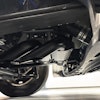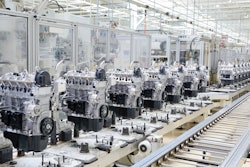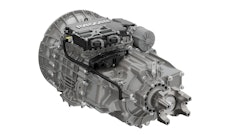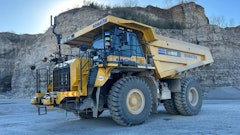
September's preliminary Class 8 truck orders for North America showed a decline on both a month-over-month (m/m) and year-over-year (y/y) basis.
FTR reports orders fell 29% to a total of 28,100 units on a m/m basis, while y/y orders were down 12% for a total of 453,000 trucks sold over the past 12 months.
ACT Research puts September 2021 net orders at 27,400 units and Classes 5-7 at 24,500 units which was also a decline from previous months.
Complete data from both research firms will be available later in the month.
According to FTR, the decline in orders was due to OEMs attempting to manage their first quarter 2022 production slots. Per FTR's press release announcing its Class 8 order figures, some manufactures continue to enter orders in a measured fashion, filling openings as they become available. Other OEMs are rolling unmet 2021 orders into 2022 and delaying new 2022 bookings.
Supply chain disruptions are expected to continue into 2022, making it difficult for OEMs to accurately predict their build capabilities during the first quarter. 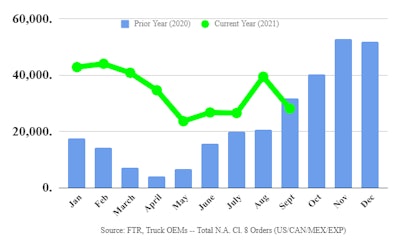 FTR
FTR
Don Ake, Vice President of Commercial Vehicles for FTR, commented in the firm's press release, “This is a complicated, bizarre situation that OEMs have never before encountered. There are many orders that were expected to be built in 2021 that cannot be completed due to the severe component shortages, most notedly, semiconductors. The OEMs are unsure when they can build the leftover 2021 orders and any new orders because the parts shortages are now expected to continue well into next year. They can’t schedule production because they don’t know their actual build capacity.
“The order number is not a true indicator of 2022 truck demand. There is significant pent-up demand for trucks leftover from 2021 because OEMs were limited in their output. Add to this the robust demand expected for 2022 due to sturdy freight growth. The fleets have a tremendous need for new trucks in 2022, however, the OEMs are delaying entering orders until the supply-chain situation is clearer.
“Unfortunately, the supply chain remains a huge mess. Parts and components are so constricted, as well as raw materials, it will take many months to rectify, and conditions are expected to improve gradually, over an extended period.”
“September traditionally marks the transition from the annual summer order trough into fall peak order activity,” said Kenny Vieth, ACT’s President and Senior Analyst, in the research firm's press release announcing its September order numbers. “However, with demand indicators from freight activity to freight rates and carrier profits in blatant contrast to equipment shortages and capacity constraints across all transportation modes, it is understandable that September’s Classes 5-8 order volume could be construed as disappointing relative to the economic set-up.”
Vieth concluded, “It is important to note that it is not demand, but supply that is dictating new order activity, as OEMs are being judicious in fully opening 2022 order books when there is not clear visibility of supply-chain capacity next year. And, while the story is just starting to develop, recent reports of energy sector issues in China dampen hope for the current supply situation to surprise on the high-side in terms of recovery timing.”
Commercial vehicle production forecasts trimmed once again
ACT reports its latest North American Commercial Vehicle OUTLOOK shows the ongoing supply chain issues have caused commercial vehicle production forecasts to be trimmed.
Steve Tam, ACT’s Vice President, said in the firm's press release announcing the new production forecast, “The setup for the entire industry remains unchanged: Despite rock-solid demand metrics across the spectrum of medium and heavy-duty vehicle types, industry capacity remains range-bound across a broad front of supply-chain constraints.
“Just like heightened inflation, the current situation in North American commercial vehicle manufacturing is transient: The issues impacting production will pass. Of course, while transient implies a return to normal, the word does not describe magnitude or duration.
“Demand-side activities remain at as-good-as-it-gets levels, but supply constraints continue to mushroom,” he added.
When asked to elaborate, he commented, “Given all they touch, semiconductors remain the primary culprit in automotive supply-chain woes. While they have become a generic reference to the supply-chain’s shortcomings, in actuality there are scores of parts that continue to be impacted by the pandemic, by the lingering impact of steel tariffs which have domestic steel prices well above other global benchmarks, and the February storm that incapacitated Texas and shut down swathes of the U.S. plastics industry for two-plus quarters. Aluminum extrusions are a challenge, wire is hard to find, and tires have been mentioned since day one of the new cycle. And, reiterating, like the supply-chains themselves, the issues are not only domestic and not only commercial vehicle.”
Tam concluded, “Semiconductors might be masking other component issues, but they are at the heart of the supply-chain’s woes. Even as new ‘fab’ capacity is coming online this year and next, global automotive industry shutdowns continue.”


